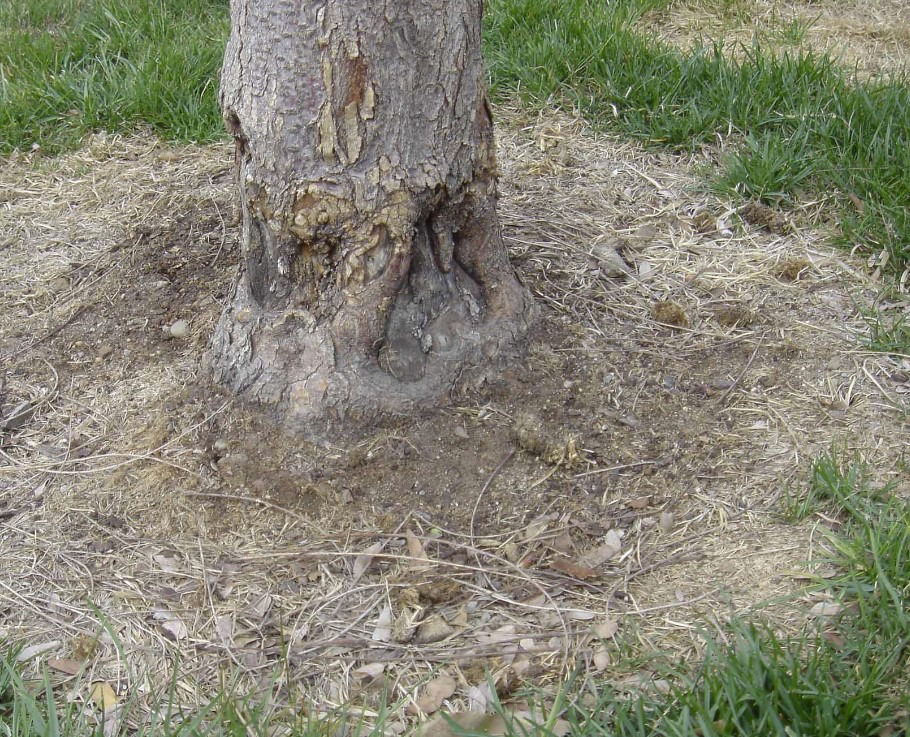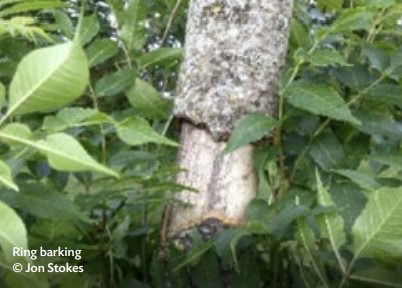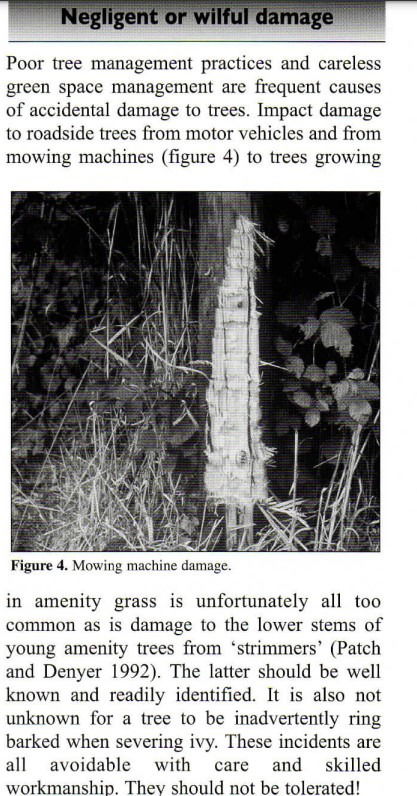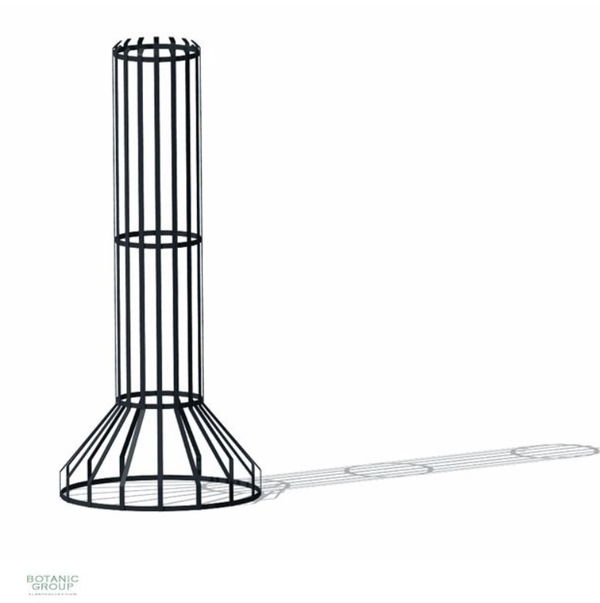Crimes Against Trees in our Green Spaces
Tuesday, 24 September 2024

Like most such places, the housing estate where I live has a few small green spaces for residents to enjoy. There are a few trees planted on them.
This summer we had a shock, when a young beech tree fell over - it was literally ripped completely away at the bottom of the trunk!
I photographed the wound and wrote about the matter to the land-owner, so that they could arrange to take away the poor young beech (aout 15 years old).
When I looked more closely at the other two trees on this piece of grass, it was clear that they could well suffer the same fate. Close inspection of their trunks revealed deep wounds in the bark of them all. To make matters worse, chemical weed killer has been sprayed around the trunks for years. The chemicals have been sprayed onto the wounds caused by mechanical grass cutters and strimmers, used for cutting the grass around the trees.
I looked at all of the trees which had been planted when this estate was built, they ALL had the same strimmer/mower mechanical bark damage.
One of our tree wardens, who is also a professor of ecology, took a look at the fallen tree. He said
"It appears that the tree has suffered
multiple instances of mower and/or strimmer damage to the base of the tree, which can be quite clearly seen. This has allowed the ingress of fungal decay, looks like a white rot, such as might result from such as a Ganoderma or numbers of other wound parasite fungi. The damage to the bark and sapwood has probably also allowed the evident spraying of herbicide direct access to the vascular system [the bark normally would prevent this]. There is a strong worry about the two other trees here, as they are also similarly damaged".
Unfortunately, the tree warden was right. And the local tree surgeon came soon after to cut down the copper beech next to this one. The tree surgeon also confirmed what we believed.
"Ring barking, or girdling, is the removal of a strip of bark from the entire circumference of branch or trunk of a tree. Over time, this can result in the death of the area above the ring, from dieback to even death of the whole tree. This can be caused by careless use of a strimmer or mower around the base of the trunk..." This statement is from the Tree Council's Tree Warden Module 3 'Challenges to our trees'.

I decided to look on the internet to see if this is a common problem. I found that all over the country people are upset and complaining about local councils/land owners damaging trees in public green spaces. It has been going on for decades!
Why does it happen?
When trees are young, the bark is still thin, and fairly fragile. Heavy machinery - such as large grass cutters - banging into the trunk causes wounds that can be fatal. The same thing happens when strimmers are used. The tree tries to heal itself, but if the strimmer or mower is constantly scraping the bark off the tree, it has little chance to recover.
Just underneath the bark is the vascular system - this carries water and elements up and down the tree. These mechanical wounds can seriously affect this system, preventing normal function.
Sometimes the damage to the tree is beneath the bark, a bit like a bruise under our skin. It can be years later that the bark swells and can come off the trunk.


The clear signs of 'ring barking', or 'girdling' can be easily spotted. The bark is completely or partially removed at, or above, ground level. This exposes the inner wood, which is usually paler in colour. Sometimes the tree can recover, if all or most of the phloem and camium remains. However, the continual crashing into the tree each time the grass is mowed, makes such recovery less likely.
"Once a wound occurs, decay-causing fungi can enter the heartwood and the decay process begins. Trees have a unique defense. The wood around the wound begins to produce special compounds in the wood cells that set up a wall or barrier to isolate the infected area. This is called compartmentalization. In a vigorous tree, new growth continues to form and add to the sound wood Once compartmentalized, discoloration and decay will spread no further unless one of the barriers is broken". The Morton Arboretum

Trees in Focus
Harry W Pepper, Arboricultural Advisory and Information Service
So what can be done?
Is there any need to strim or cut the grass right up to the tree? If people want the grass so manicured, then an easy solution would be to put tree protection around the base of newly planted trees, and keep them there for years, until the tree is able to protect itself. Perhaps we should be asking all housing developers to routinely put in attractive tree protection on all the young trees they plant? I do not mean the dreaded plastic tree guards that we spend so much time removing, but something which will expand, and is attractive, and is not plastic! Is there even such a thing?!
Below is the closest thing I could find.

